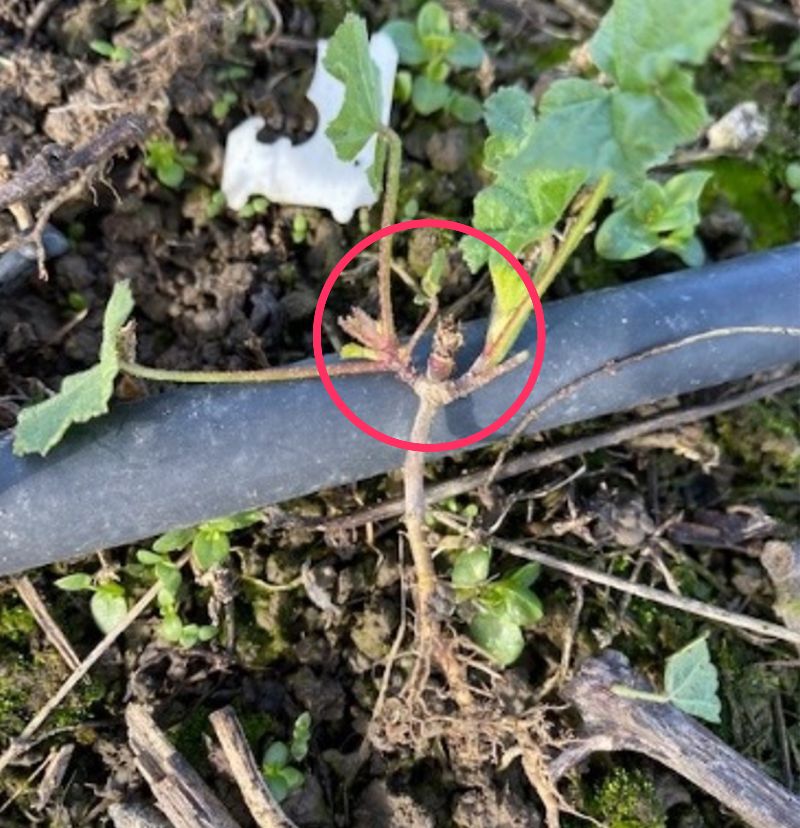Alion for mallow control
About
-
Category
- Product News
- News
-
Date
31 August, 2022
About
Category
- Product News
- News
Date
31 August, 2022
It’s not uncommon to get a comment about perceived lack of control of mallow weeds when Alion® pre-emergent herbicide has been used.
Mallow (Malva spp.) is a term used to describe a group of species. Several of them are difficult to tell apart. Generally, they are described as short-lived perennials meaning the same plant can continue growing for a number of years if conditions favour good growth. (1) If not controlled properly in the first year after germination, control can become more difficult. Generally, older and / or larger perennial plants continue to grow and develop a larger root systems and hardier stems, making the use of higher rates of effective foliar herbicides and good coverage necessary.
Herbicides such as glufosinate do offer some control, but this is limited to browning off the top, leaving a living root system. This allows the plant to regenerate, sometimes in the same year depending on when the herbicide was applied. Glyphosate herbicides such as Roundup Ultra®MAX, when used on mallow, will translocate to the roots, but require a very high rate (2), and/or the addition of a mixing partner to be effective. (Depending on growth stage of the plant). When using Roundup UltraMAX, best results on problem weeds will be achieved by early application on smaller, newly emerged weeds.
Alion herbicide has no knockdown activity and will only control weeds that have germinated from a seed. So, when applied to soil where older mallow plants are present, control of the existing plants will not occur, or be very limited at best. Alion will, however, provide excellent control of mallows that germinate from seed. Best results are obtained by application to bare soil where an effective clean up regime has been implemented. However, weeds such as mallow that still have a living root system, and broad-leaved dock (Rumex obtusifolius) that can re-grow from a root chip, will continue to grow through any ground where Alion has been applied.
Should you see mallow species in your herbicide treatment strip, it is possible to see the age of the plant by inspecting the growing tip. If a woody stump is present (picture 1) it is most likely an older plant that has regenerated following an incomplete herbicide kill. A fresh green tip (picture 2) will generally indicate a newly germinated plant. Escapes in herbicide treatment strips treated with Alion are almost always these older plants that still have a living root system.
To get the best results from Alion, it is vital to implement a robust weed control programme prior to application. This requires identifying what weed species are present, and in the case of mallow, knowing if they have regenerated from an existing root system so the right rates and combinations of products can be used.
(1) Massey University https://www.massey.ac.nz/massey/learning/colleges/college-of-sciences/clinics-and-services/weeds-database/mallow.cfm
(2) Roundup UltraMAX has no label claim for control of mallow species. Comment on control using high rate is made from field observations in commercial situations.

If a woody stump is present it is most likely an older plant that has regenerated following an incomplete herbicide kill.




